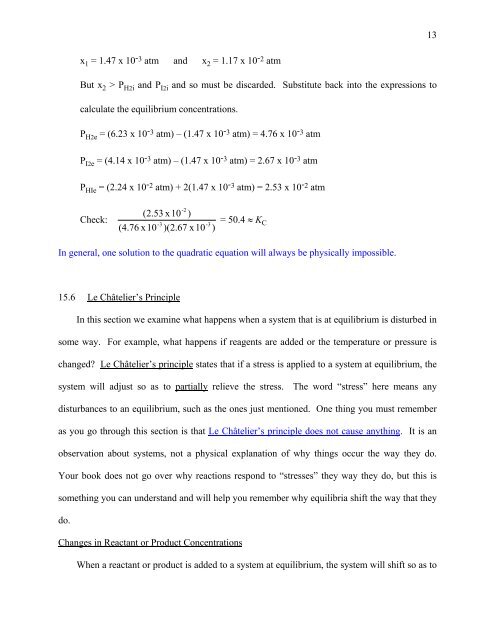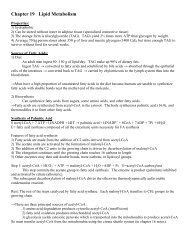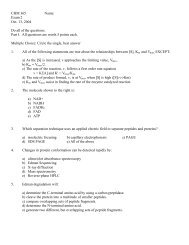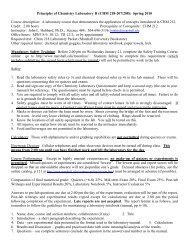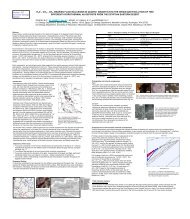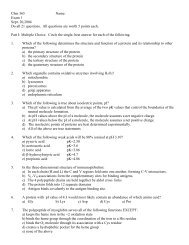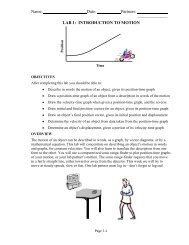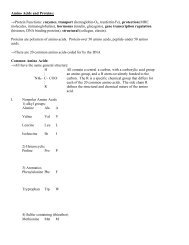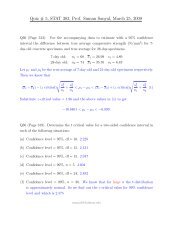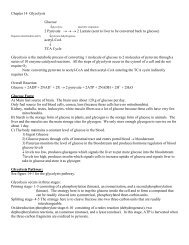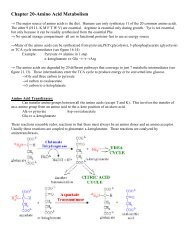Chapter 15 – Chemical Equilibrium
Chapter 15 – Chemical Equilibrium
Chapter 15 – Chemical Equilibrium
Create successful ePaper yourself
Turn your PDF publications into a flip-book with our unique Google optimized e-Paper software.
13<br />
x 1 = 1.47 x 10 - 3 atm and x 2 = 1.17 x 10 - 2 atm<br />
But x 2 > P H2i and P I2i and so must be discarded. Substitute back into the expressions to<br />
calculate the equilibrium concentrations.<br />
P H2e = (6.23 x 10 - 3 atm) <strong>–</strong> (1.47 x 10 - 3 atm) = 4.76 x 10 - 3 atm<br />
P I2e = (4.14 x 10 - 3 atm) <strong>–</strong> (1.47 x 10 - 3 atm) = 2.67 x 10 - 3 atm<br />
P HIe = (2.24 x 10 - 2 atm) + 2(1.47 x 10 - 3 atm) = 2.53 x 10 - 2 atm<br />
Check:<br />
(4.76 x 10<br />
(2.53 x 10<br />
-3<br />
-2<br />
)<br />
)(2.67 x 10<br />
-3<br />
)<br />
= 50.4 ≈ K C<br />
In general, one solution to the quadratic equation will always be physically impossible.<br />
<strong>15</strong>.6 Le Châtelier’s Principle<br />
In this section we examine what happens when a system that is at equilibrium is disturbed in<br />
some way. For example, what happens if reagents are added or the temperature or pressure is<br />
changed Le Châtelier’s principle states that if a stress is applied to a system at equilibrium, the<br />
system will adjust so as to partially relieve the stress. The word “stress” here means any<br />
disturbances to an equilibrium, such as the ones just mentioned. One thing you must remember<br />
as you go through this section is that Le Châtelier’s principle does not cause anything. It is an<br />
observation about systems, not a physical explanation of why things occur the way they do.<br />
Your book does not go over why reactions respond to “stresses” they way they do, but this is<br />
something you can understand and will help you remember why equilibria shift the way that they<br />
do.<br />
Changes in Reactant or Product Concentrations<br />
When a reactant or product is added to a system at equilibrium, the system will shift so as to


